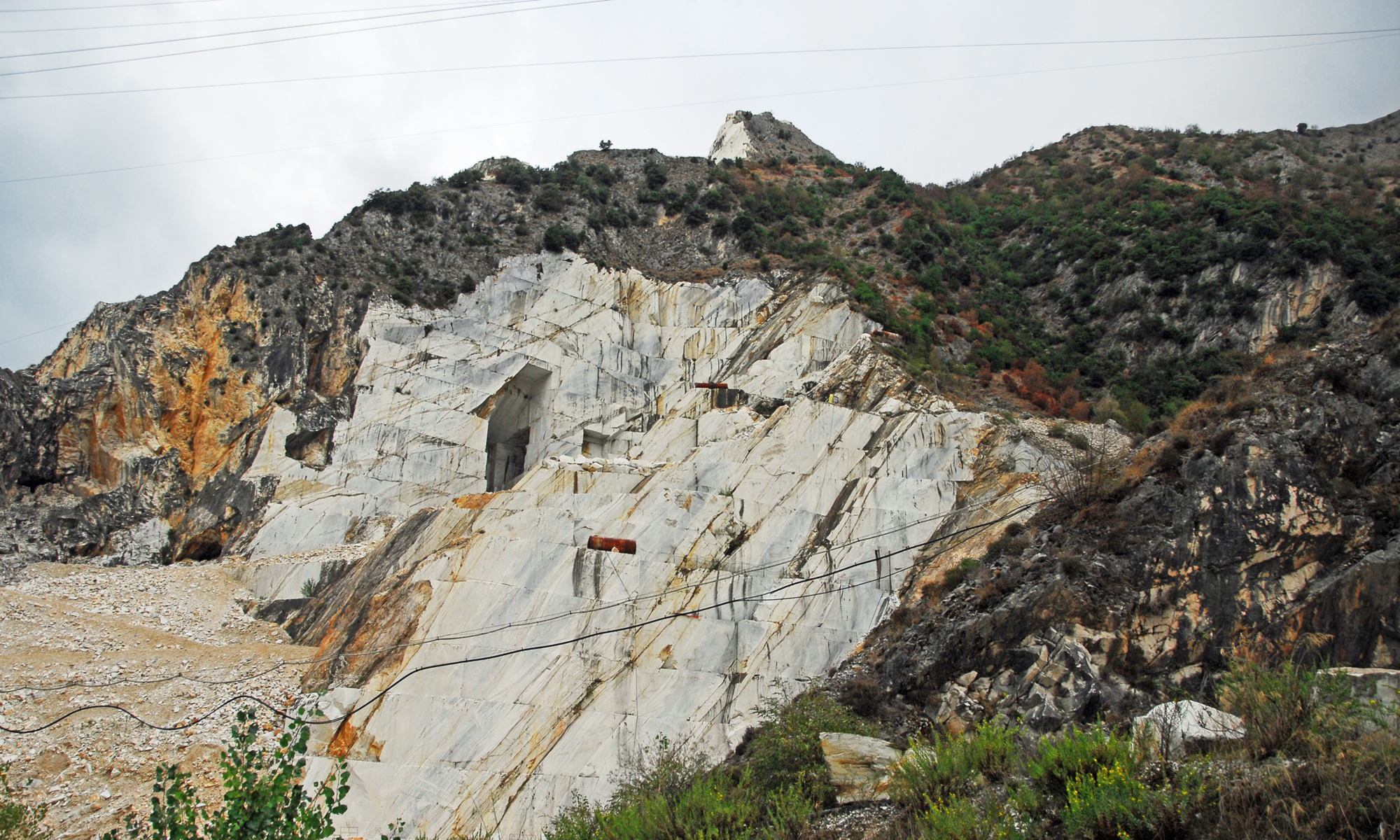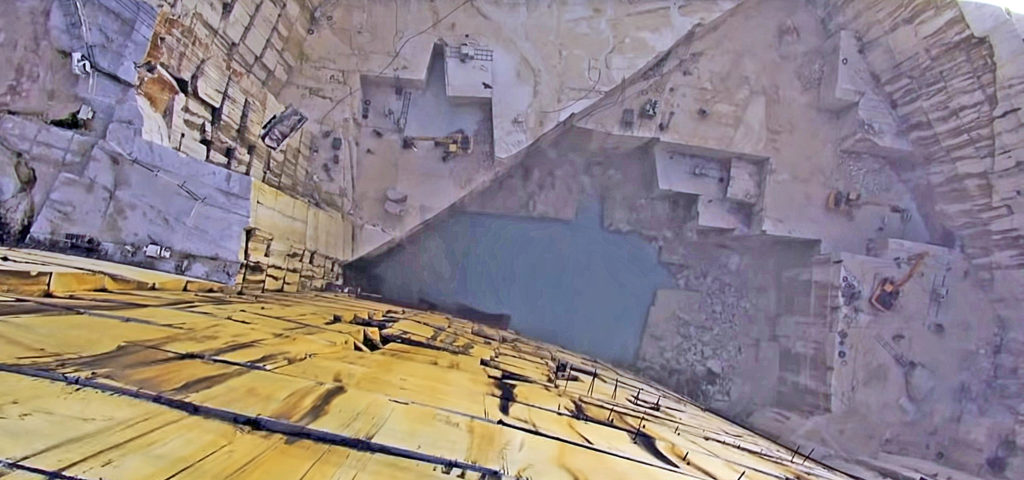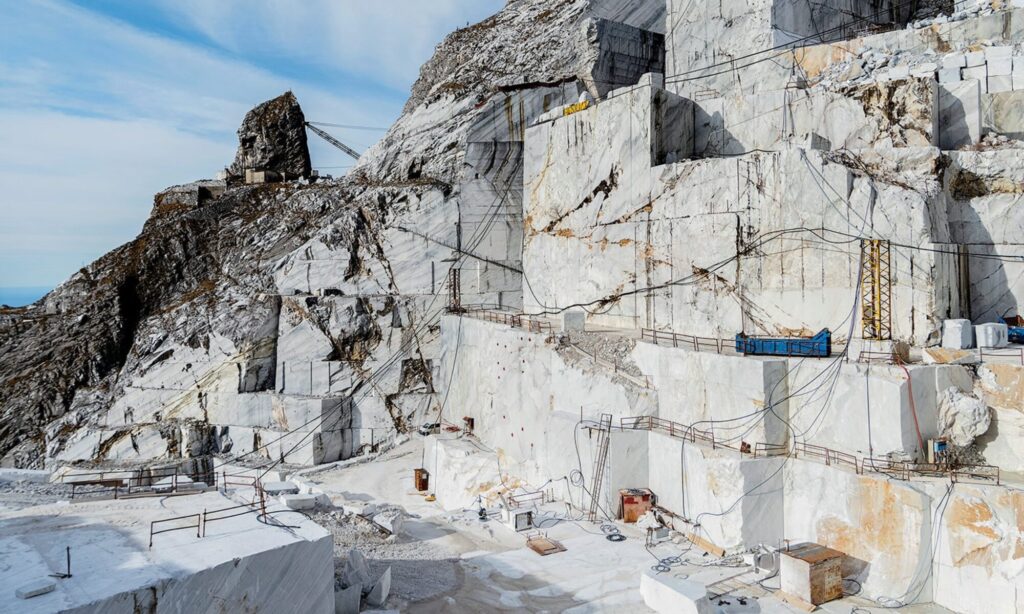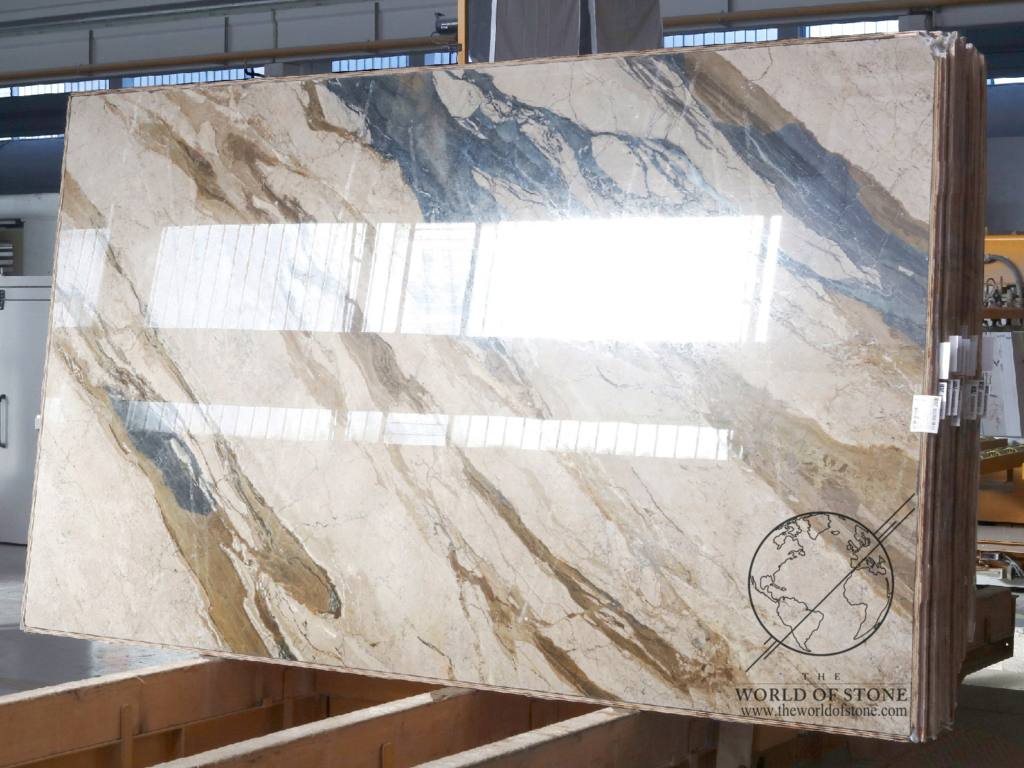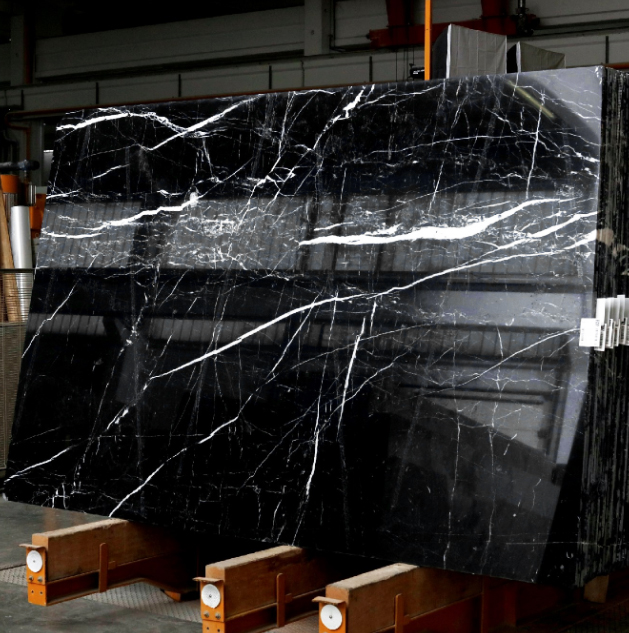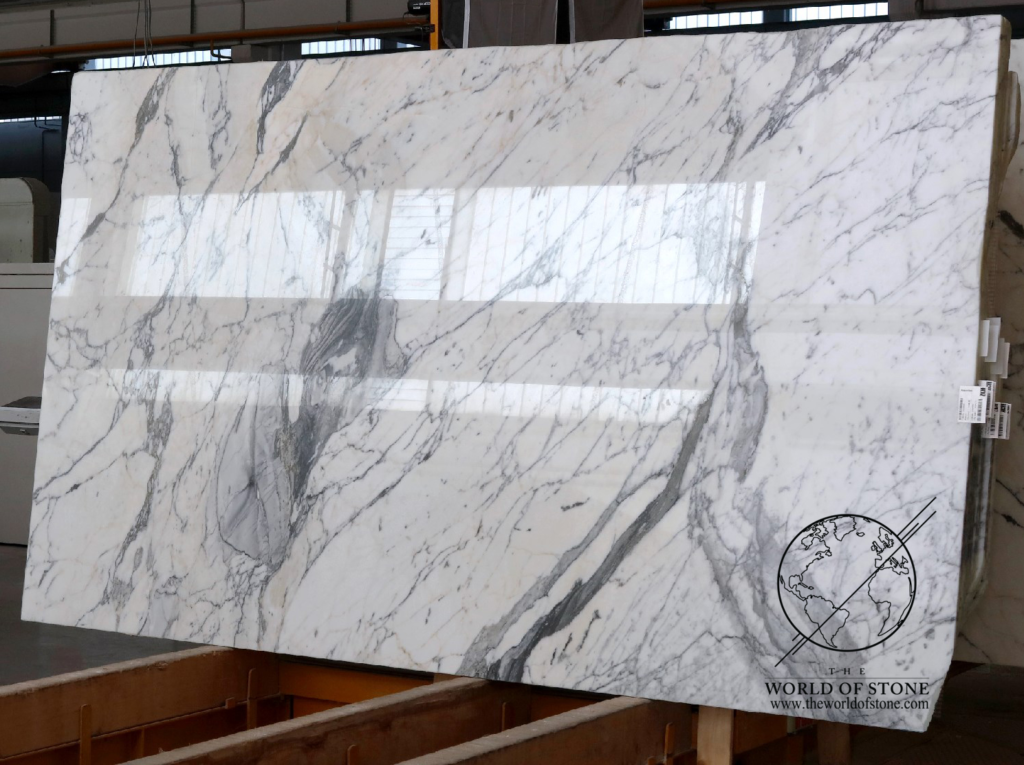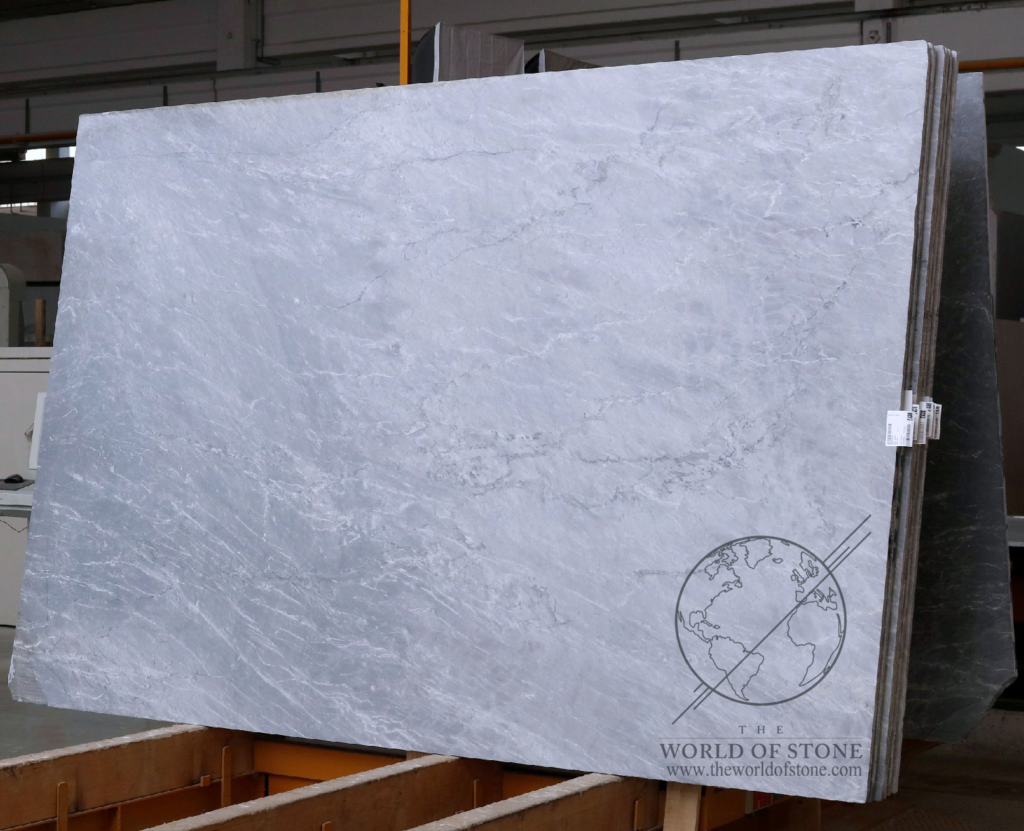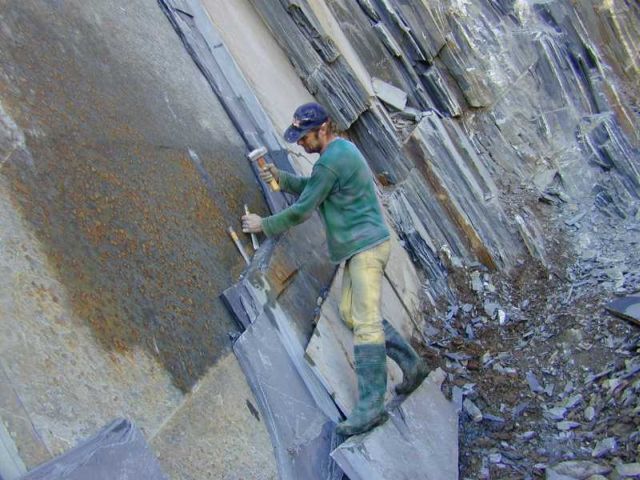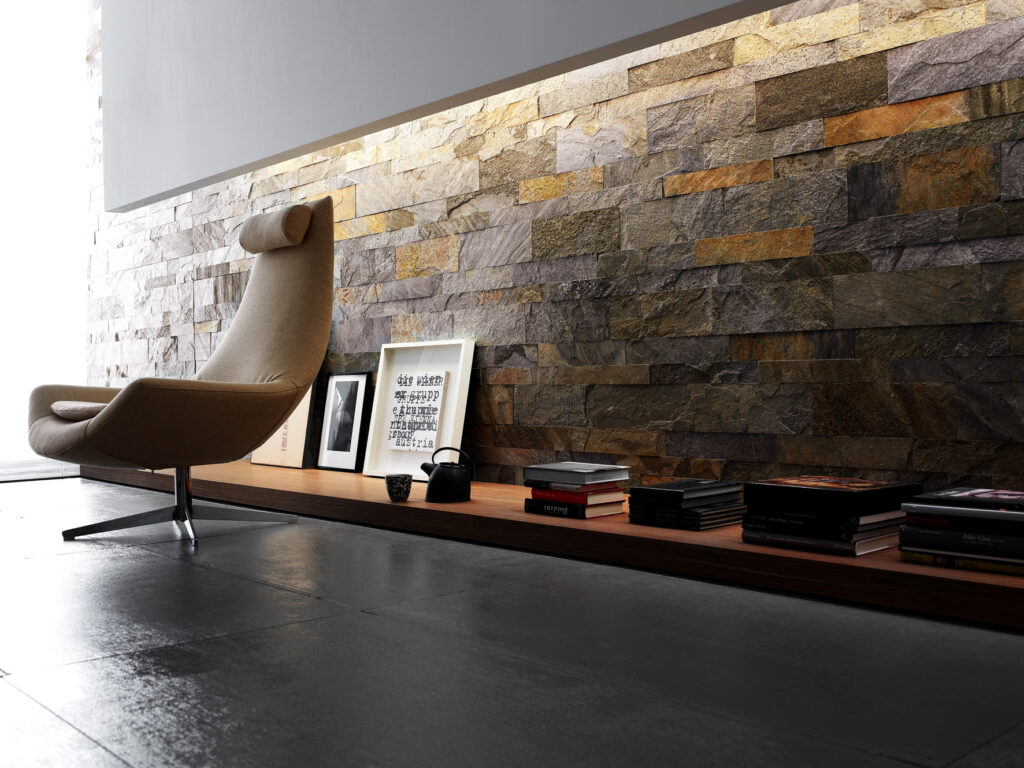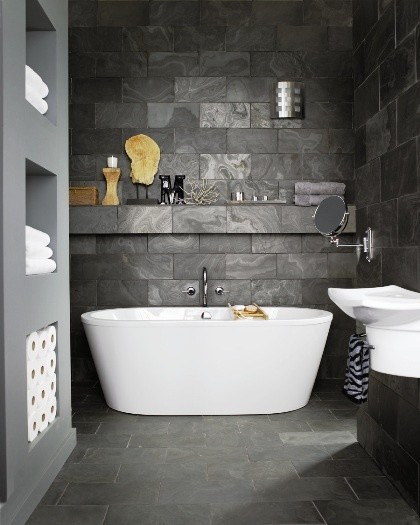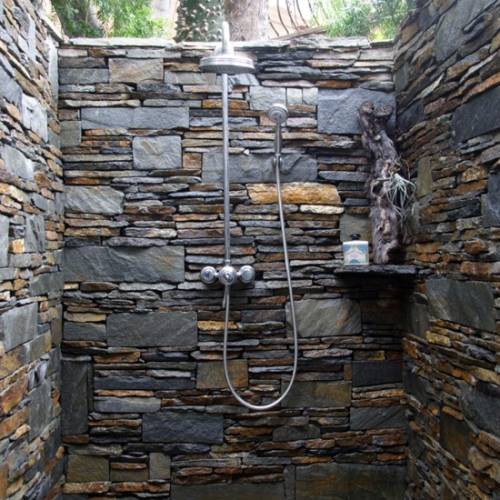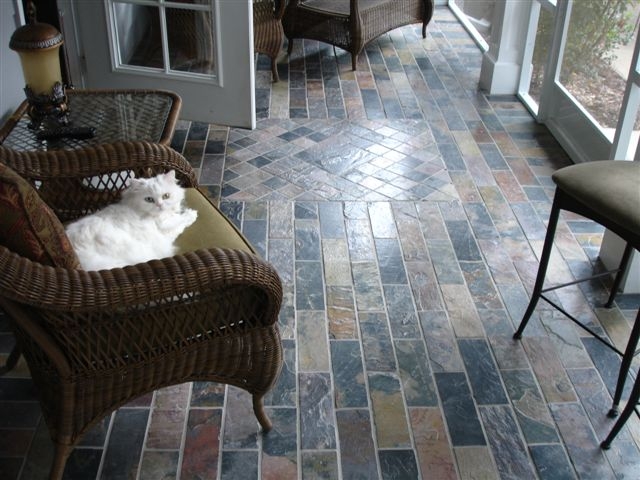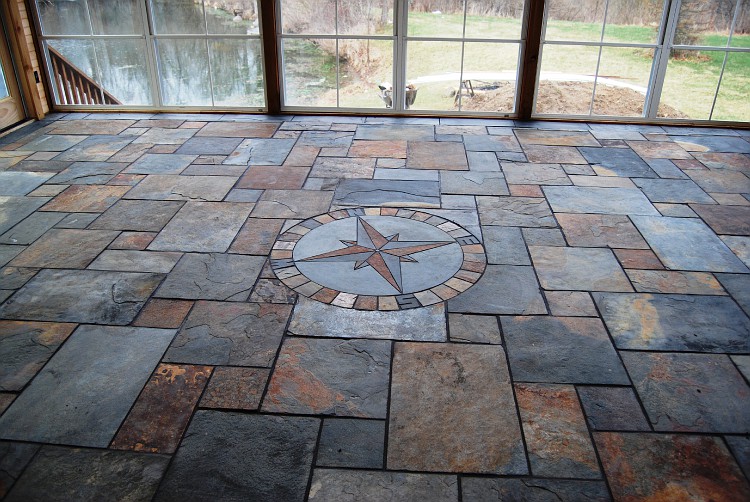Marble
What is Marble?
Marble, from Greek: marmaros (shining stone) > Latin: marmor > Italian: marmol was the designation given to ANY stone that would take a polish. Today it is more strictly defined as a metamorphosed limestone composed mainly of calcite or dolomite. Because the main mineral is calcite and dolomite they do not get along well with acids. You may remember from chemistry class that acids and bases are locked in an eternal struggle to neutralize each other. The net effect for you marble surface is not catastrophic. At worst, typical household acids (citrus, vinegar, some cleaners) will not do permanent damage to your marble top. If your marble is polished, contact with acid will make that area look dull, or ‘honed’ as we call it in the industry. These areas can be re polished and brought back to their original glory. Many design professionals are specifying honed marble surfaces thus alleviating the need for future restoration.
Click here to see our marble selection.
Care & Maintenance
In the vast majority of situations marble and limestone can be cleaned with warm water and a mild detergent such as dishwashing liquid. Harsh cleaners must be avoided to avoid etching and in the case of an abrasive cleaner, scratching. Never use a cleaner that contains lemon juice or vinegar, these will etch the surface of your stone.
Spills
Blot the spill with a paper towel immediately. Don’t wipe the area, it will spread the spill. Flush the area with water and mild soap and rinse several times. Dry the area thoroughly with a soft cloth. Repeat as necessary.
Stain Removal – Marble & Limestone
There is a very effective home remedy for removing stains in marble and limestone. Mix baking soda with water to about the consistency of peanut butter, spread the mixture over the surface of the stain and cover with plastic wrap. Let the mixture sit for 24 hours, remove the plastic wrap and wipe up the baking soda mixture. Allow the area to dry thoroughly. Once dry the stain will be removed or greatly reduced. If needed repeat the process for a second time. If the stain still persists it may be necessary to call a professional stone restorer.
Limestone

Limestone slabs, revered for centuries in architectural design, offer a blend of aesthetic beauty and practical durability. These slabs are cut from natural limestone, a sedimentary rock primarily composed of calcium carbonate, often formed from the remains of marine organisms like coral and shellfish. Here’s a detailed description for their use in architecture:
Aesthetic Qualities:
- Color and Texture: Limestone varies from white, gray, or yellow to even subtle blue or red hues, depending on the impurities present. The texture can range from smooth to slightly rugged, providing a tactile and visually rich surface.
- Grain: The grain structure of limestone often shows fossil imprints, which can add a unique, organic aesthetic to architectural elements.
Durability and Practicality:
- Weather Resistance: Limestone is highly resistant to weathering. Over time, it develops a patina, which enhances its beauty and gives structures a timeless look.
- Strength: While not as hard as granite, properly treated limestone can withstand significant loads, making it suitable for both structural and decorative uses.
Architectural Uses:
- Exterior Cladding: Used for facades, limestone provides an elegant, classic appearance to buildings, blending well with both modern and traditional designs.
- Interior Applications: Slabs can be used for flooring, countertops, and wall cladding. They offer a cool, durable surface that’s perfect for high-traffic areas.
- Monuments and Sculpture: Due to its workability and ability to take fine detail, limestone has been historically favored for sculptural elements and commemorative plaques.
Sustainability:
- Eco-Friendly: Limestone is abundant and extraction has a lower environmental impact compared to some other stones. Additionally, buildings made from limestone can contribute to a reduction in the urban heat island effect due to its light color reflecting sunlight.
Care and Maintenance:
- Sealing: While limestone is durable, sealing it can prevent staining, especially for interior uses like countertops.
- Cleaning: Generally, limestone requires mild cleaning solutions to avoid erosion or damage to its surface.
Historical and Cultural Significance:
- Legacy: Limestone has been used in some of the world’s most iconic structures, from ancient Egyptian pyramids to European cathedrals, symbolizing longevity and grandeur.
In architecture, limestone slabs not only contribute to the structural integrity of a building but also add a layer of sophistication and historical resonance. Whether chosen for its visual appeal, practical attributes, or cultural connotations, limestone continues to be a preferred material in the architect’s palette, admired for its natural beauty and the narrative it weaves into the built environment.
Basalt

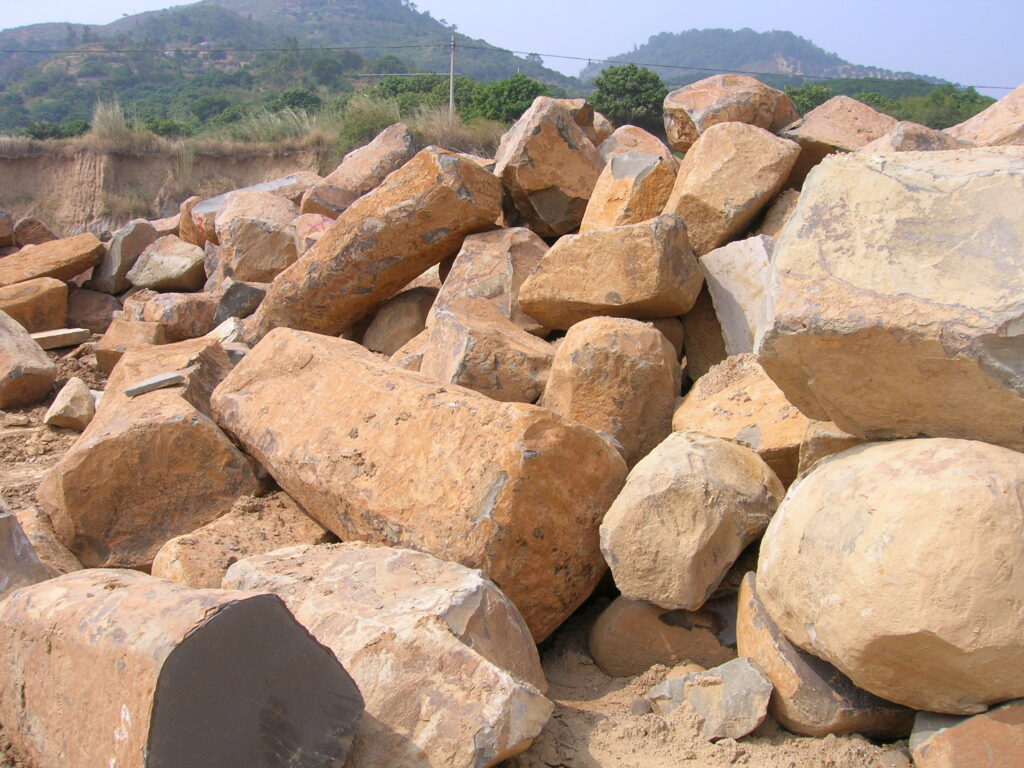
Basalt slabs are architectural elements crafted from basalt, a common volcanic rock known for its dark color, typically black or dark brown to dark gray, and its fine-grained texture. Here’s a detailed description:
- Appearance: Basalt slabs have a smooth, polished surface when finished, which can contrast with a more rugged, textured look when left in a more natural state. The color can vary slightly due to the presence of different minerals but generally remains within dark shades.
- Material Properties:
- Durability: Basalt is extremely hard and durable, making it resistant to weathering and chemical erosion. This durability makes basalt slabs ideal for both indoor and outdoor applications where longevity is desired.
- Heat Resistance: Given its volcanic origin, basalt can withstand high temperatures, which might be useful in settings like around fireplaces or in high-heat industrial environments.
- Density: Basalt is dense, which contributes to its strength and stability when used in construction or as a structural element.
- Usage:
- Architectural: Basalt slabs are often used in high-end construction for countertops, wall cladding, flooring, stairs, and as decorative elements. Their dark, sleek appearance adds a modern or minimalist aesthetic to spaces.
- Landscaping: In outdoor settings, basalt slabs might be used for paving, garden steps, or as retaining wall materials, providing both function and an aesthetic that blends well with natural landscapes.
- Art and Design: Artists and designers might use basalt slabs for sculptures, tables, or other decorative pieces, valuing their visual appeal and the unique patterns formed by the rock’s natural fractures or inclusions.
- Installation: Installing basalt slabs requires careful handling due to their weight and hardness. Professional cutting and shaping might be necessary, along with appropriate bedding and sealing to ensure longevity, especially in environments exposed to moisture.
- Environmental Impact: Basalt is abundant in many parts of the world, and its extraction typically has a lower environmental impact compared to some other stones.
- Cultural Significance: In various cultures, basalt has been used for millennia, often for its practical properties but also for its symbolic value, sometimes representing strength, endurance, or a connection to the earth’s primordial forces.
Basalt slabs, therefore, not only serve functional purposes but also bring a certain aesthetic gravitas to any setting, embodying a natural, elemental beauty that can enhance both modern and traditional designs.
Slate
Granite

“Granite” is certainly the most misused term in the stone business. Typically the name is applied to any stone that is relatively low maintenance. Stones are made up primarily of silicates fall into this category. Silicate and other like minerals are acid resistant and very hard making these materials a great choice for food prep and other surfaces that are subject to a lot of wear and tear. Gneiss and basalt are often misclassified as granite.
Travertine

Travertine is a type of limestone characterized by its light color and unique, often banded, appearance, which is due to its formation process in natural hot springs and limestone caves. Here’s a detailed description:
Geological Formation: – Travertine forms through the precipitation of calcium carbonate from mineral springs, especially hot springs. The mineral-rich water, upon reaching the surface, evaporates, leaving behind layers of calcium carbonate.
Appearance: – Color: Typically, travertine ranges from white or cream to light tan, though impurities can introduce shades of brown, yellow, or even red.
Texture: It has a fibrous or concentric appearance due to the layered deposition of minerals.
Holes and Pits: One of travertine’s distinguishing features is its natural holes, which are remnants of air bubbles or organic matter trapped during the mineral deposition. These can be filled with resin or left as they are for a more rustic look.
Physical Properties: Durability: Travertine is relatively hard but can be porous if not treated, which might require sealing to prevent staining or water absorption in applications like flooring or countertops.
Finish: It can be polished to a smooth finish or left with a tumbled, brushed, or natural finish, each providing a different aesthetic.
Uses: Construction: Commonly used in interior and exterior building projects. Its natural beauty makes it popular for flooring, wall cladding, and as a veneer.
Decoration: Often seen in sculptures, fountains, and as a decorative stone in landscaping due to its aesthetic appeal and the way it ages gracefully.
Historical Use: Travertine has been used since ancient times, notably in Rome, where it was employed in iconic structures like the Colosseum.
Maintenance: Regular cleaning with mild soap and water is recommended. Sealed travertine requires less maintenance but should be resealed periodically if used in areas prone to spills or heavy use. Travertine’s natural beauty, combined with its durability and versatility, makes it a favored choice in architecture and design, offering both classical elegance and modern minimalism depending on how it’s finished and used.
